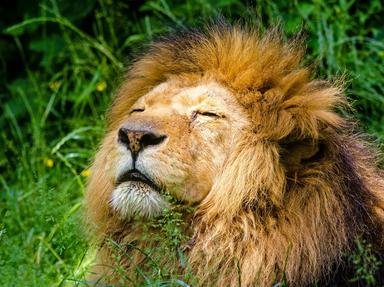Quiz Answer Key and Fun Facts
1. This striking photo depicts an impressive specimen of black rhinoceros. In spite of their misleading common names, the two African species of rhino, the black and the white, do not differ from each other in colour, but rather in size and what other physical feature?
2. Found in large herds in the Serengeti-Mara ecosystem, Grant's zebra is a subspecies of what species of zebra, named after its preferred habitat?
3. Occurring in huge numbers in most of southern Africa, the blue wildebeest is one of two species of the large antelope also known by what name?
4. Another large antelope, the hartebeest (or kongoni) gets its common name from its resemblance to what related family of ruminant mammals, none of whose members occur in Africa?
5. The magnificent horns of the male greater kudu, which the photo shows to great advantage, are often used to make shofars, ancient musical instruments pertaining to which religion?
6. This imposing creature, with its striking horns, is known as beisa - the East African species of which large antelope?
7. The beautiful giraffe in the photo is a native of East Africa. Generally called Masai giraffe, it is also known by the name of which iconic mountain in Tanzania - Africa's highest point?
8. A member of the notorious "Big Five", the Cape buffalo is said to be one of Africa's most dangerous animals because of its size and uncertain temper. What authoritative name is given to the shield formed by the bases of the horns of the adult male buffalo, as shown in the photo?
9. Very dangerous in spite of their amiable appearance, hippos are often found in Tanzanian rivers and lakes. Which of the following mammals is a close relative of these not-so-gentle giants?
10. One of the stars of the animated film "The Lion King", the common warthog is relatively widespread in sub-Saharan Africa. Which of the following would NOT normally be part of a warthog's diet?
Source: Author
LadyNym
This quiz was reviewed by FunTrivia editor
guitargoddess before going online.
Any errors found in FunTrivia content are routinely corrected through our feedback system.
